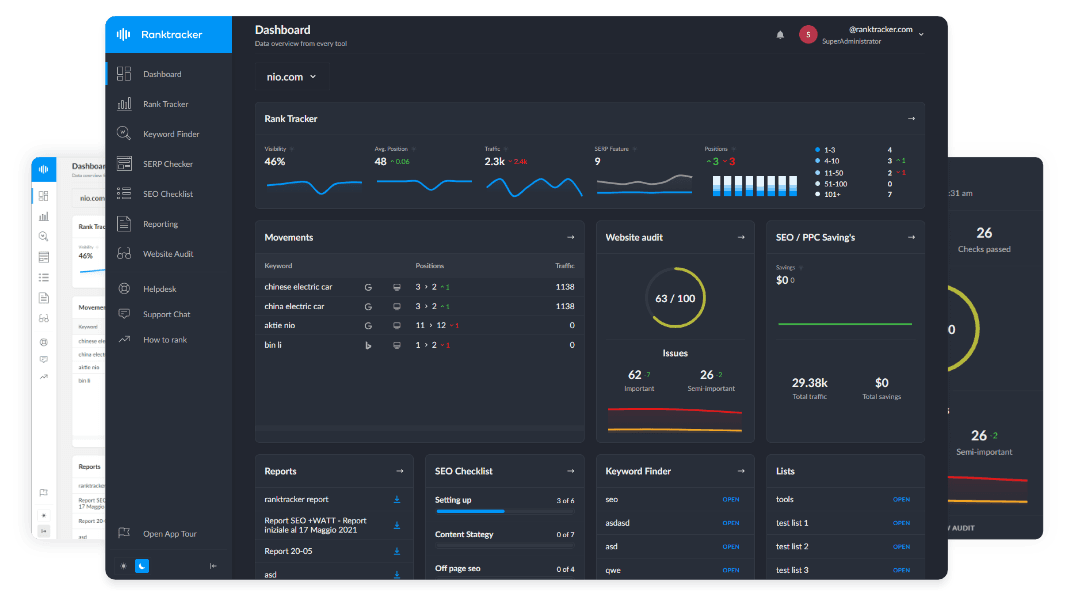Intro
Customer data drives growth. Whether you run a startup, a growing business, or a global enterprise, your success depends on how well you collect, unify, and leverage your data. This is precisely what a Customer Data Platform (CDP) is designed to do.
A CDP isn't just another marketing tool. It's the foundation of a customer-first strategy. It gathers data from every source, including website visits, email interactions, purchase history, and offline activity, to create a single, accurate view of each customer.
Yet with so many CDPs available, choosing the right one can be challenging. This guide simplifies the decision. You’ll learn the essential features to look for, the common mistakes to avoid, and how to select the best CDP for your business with confidence.
**What is a Customer Data Platform (CDP)? **
A CDP refers to a centralized system that gathers, unifies, and manages customer data from disparate online and offline sources. It creates comprehensive, individual customer profiles by resolving identities across touchpoints and stitching together fragmented interactions.
The platform processes this data in real time, supports segmentation, and maintains compliance with data governance standards. Unlike siloed databases, a CDP serves as a single source of truth for customer information, activating rich customer data for precision targeting.
Benefits of CDP
Here’s why a CDP is indispensable for modern businesses:
1. Silo busting
Most companies store customer data across disconnected systems like email platforms, social media dashboards, POS systems, and more. A CDP unifies these silos, creating a single source of truth for comprehensive insights. This integration also opens opportunities for smarter business data collection.
2. Real-time personalization
Today’s consumers expect brands to remember who they are, what they like, and how they behave across every channel. CDPs allow you to create consistent and personalized experiences in real-time.
3. Improved marketing ROI
With better segmentation and data accuracy, you can implement smarter and more targeted new marketing campaigns. That means better conversion rates and lower acquisition costs.
4. Stronger customer retention
Spot patterns in customer behavior to prevent churn and strengthen loyalty. If a CDP detects declining engagement, like fewer logins, shorter sessions, or lapsed purchases, it automatically triggers personalized retention offers to re-engage high-value customers.
Key CDP features to look for
Not all CDPs are equal. Prioritize these essential features to ensure seamless data management, personalized marketing, and compliance.
1. Data integration capabilities
A strong CDP should connect with analytics tools, CRMs, email platforms, e-commerce systems, ad networks, and offline sources. Native integrations are preferable for easier scaling.
2. Identity resolution
The CDP must unify customer data across devices and touchpoints, even anonymous interactions, to create a single, accurate profile. For instance, the system should recognize when an anonymous website visitor later logs in via email, linking their behavior to a unified profile while respecting privacy preferences.
3. Real-time data processing
Avoid personalization delays by choosing a CDP that updates profiles and segments instantly as customer interactions occur. For example, if a customer abandons their cart, the system should immediately trigger a tailored remarketing message without batch processing delays to maximize conversion opportunities.
4. Advanced segmentation
Look for dynamic segmentation based on behavior, demographics, time-based triggers, and predictive scoring (e.g., churn risk, lifetime value). For instance, the CDP automatically moves high-LTV customers who haven’t engaged in 14 days into a “win-back” campaign with exclusive offers, while suppressing those already in active sales cycles.
5. Data privacy and compliance
Ensure GDPR, CCPA, and HIPAA compliance, plus consent management, opt-out controls, and data deletion capabilities. For example, it should automatically enforce retention policies and anonymize user data upon request, ensuring compliance even as regulations evolve.
6. Artificial intelligence and predictive analytics
Advanced CDPs use AI for predictive insights, such as customer lifetime value, next-best actions, and automated personalization. It provides predictive insights that can inform strategies to improve customer satisfaction and other related metrics.
7. Scalability and performance
The platform must handle growing data volumes without compromising speed, ensuring fast processing as your business expands. To maintain optimal performance, the CDP should support horizontal scaling and efficient data partitioning, distributing workloads seamlessly across servers.

(Image Source:Blueshift)
How to evaluate a CDP for your business
Select a CDP that solves immediate needs and scales with growth. Let’s turn strategy into action. Here’s a step-by-step process to evaluate CDPs:
Step 1: Define your goals
Determine which teams (marketing, sales, etc.) will use the CDP and establish measurable KPIs such as conversion rates or customer retention. Clear goals ensure the CDP aligns with business needs and delivers tangible ROI.
The All-in-One Platform for Effective SEO
Behind every successful business is a strong SEO campaign. But with countless optimization tools and techniques out there to choose from, it can be hard to know where to start. Well, fear no more, cause I've got just the thing to help. Presenting the Ranktracker all-in-one platform for effective SEO
We have finally opened registration to Ranktracker absolutely free!
Create a free accountOr Sign in using your credentials
Stakeholders must agree on measurable outcomes (e.g., sales cares about lead conversion, marketing about engagement rates). If stakeholders aren’t aligned, teams may revert to old tools/processes, undermining the CDP’s ROI.
Next, prioritize use cases like unified customer profiles or real-time segmentation to focus on implementation efforts and maximize the platform’s impact.
Step 2: Assess your data sources
Audit all customer data sources, including web analytics, customer relationship management (CRM) systems, and offline interactions. This reveals integration requirements and ensures the CDP can consolidate fragmented data into actionable insights.
Consider data quality and accessibility, too. Clean, structured data improves CDP performance. So, mapping sources early prevents costly workarounds and ensures seamless connectivity with your existing tech stack.

(Image Source:Ranktracker)
**Step 3: Shortlist Potential Vendors **
Research CDPs specializing in your industry (B2C, B2B, or enterprise). Then, compare vendors based on features, scalability, and customer reviews. Narrow options by evaluating case studies and demos.
Focus on vendors with proven success in similar businesses to ensure the platform meets your specific needs without unnecessary complexity.
**Step 4: Request a demo and trial **
Request hands-on demos to assess usability and integration ease. This way, you can simulate real-world scenarios, such as customer journey tracking, to verify performance.
The All-in-One Platform for Effective SEO
Behind every successful business is a strong SEO campaign. But with countless optimization tools and techniques out there to choose from, it can be hard to know where to start. Well, fear no more, cause I've got just the thing to help. Presenting the Ranktracker all-in-one platform for effective SEO
We have finally opened registration to Ranktracker absolutely free!
Create a free accountOr Sign in using your credentials
Engage vendor support teams during trials to gauge responsiveness, too. A user-friendly interface and reliable support reduce onboarding friction and long-term operational hurdles.
**Step 5: Compare pricing **
Analyze different pricing models—whether subscription-based, usage-based, or custom enterprise packages. Then, identify any hidden costs such as setup fees or integration charges. Once you have a complete picture, calculate potential ROI by estimating specific efficiency gains or projected revenue growth from improved personalization and customer retention.
Balance cost against long-term value, too. A CDP that offers scalability and advanced features may require a costlier investment but can future-proof your marketing operations as your business grows. But remember, focus on solutions that fit your current budget while showing potential for measurable business impact.
When chosen strategically, a CDP transforms from a simple tool into a vital business asset, driving personalized experiences and data-driven decisions.
**Key CDP pitfalls and solutions **
CDPs offer powerful insights but only when implemented strategically. To ensure your CDP investment drives customer loyalty, enhances marketing efforts, and delivers measurable value, it's critical to recognize and overcome these common challenges.
1. Data quality issues compromise results
A CDP is only as powerful as the data it processes. Incomplete, duplicate, or inconsistent data from CRMs, apps, or customer support systems leads to unreliable customer segments and failed campaigns.
The All-in-One Platform for Effective SEO
Behind every successful business is a strong SEO campaign. But with countless optimization tools and techniques out there to choose from, it can be hard to know where to start. Well, fear no more, cause I've got just the thing to help. Presenting the Ranktracker all-in-one platform for effective SEO
We have finally opened registration to Ranktracker absolutely free!
Create a free accountOr Sign in using your credentials
Adopting a data governance framework helps ensure accuracy and compliance while treating customers as complex individuals, not just data points, for more meaningful segmentation.
Implementing strong governance also brings key benefits, with 66% of organizations reporting better data security and 52% experiencing fewer compliance violations. A well-structured approach turns raw data into actionable insights while safeguarding customer trust.
2. Overemphasis on integration neglects core features
While seamless integrations with a digital marketing platform are important, focusing solely on connectivity can overshadow a CDP’s advanced capabilities.
3. Insufficient training limits adoption
Without proper training, marketers may stick to basic segmentation, missing out on advanced personalization features, while data teams struggle with governance and integration. This leads to underutilization, wasted investment, and frustration across departments.
To overcome this, businesses could invest in role-specific training tailored to marketers, analysts, and IT teams, ensuring each group maximizes the platform’s capabilities. Encouraging certification programs and hands-on workshops can also deepen expertise and boost confidence in using the CDP’s full suite of tools.
Additionally, creating an internal knowledge base with best practices, troubleshooting guides, and real-world use cases helps teams quickly resolve issues and adopt the platform more effectively.
Frequently Asked Questions (FAQs)
1. How does a CDP improve customer experiences compared to traditional marketing tools?
A CDP goes beyond basic marketing tools by unifying data from multiple sources, such as CRMs, websites, and mobile apps, into a single customer profile. This enables real-time personalization, consistent cross-channel messaging, and predictive insights to meet customer expectations more effectively than fragmented systems.
2. What role does first-party data play in a CDP, and why is it prioritized over third-party data?
First-party data, collected directly from customer interactions, is the foundation of a CDP because it is more accurate, privacy-compliant, and actionable. Third-party data, sourced externally, is less reliable due to privacy restrictions and diminishing accuracy, making first-party data essential for building trust and personalization.
3. Can a CDP function without integration with marketing automation platforms?
While a CDP can operate independently by centralizing and analyzing customer data, its full potential is realized when integrated with marketing automation tools. The CDP provides the unified data needed for segmentation, while marketing automation executes campaigns, ensuring personalized and timely customer engagement.
**Bottom Line **
There’s no one-size-fits-all solution when it comes to CDPs. The best platform for your business depends on your business model, technical resources, marketing maturity, and data ecosystem. Pick a company that helps you get started, teaches you how to use their tools and is there when you need help. That’s how you ensure long-term success.

